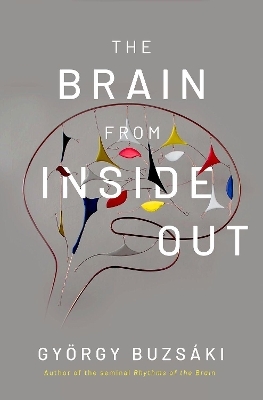
The Brain from Inside Out
Oxford University Press Inc (Verlag)
978-0-19-090538-5 (ISBN)
György Buzsáki's The Brain from Inside Out examines why the outside-in framework for understanding brain function has become stagnant and points to new directions for understanding neural function. Building upon the success of 2011's Rhythms of the Brain, Professor Buzsáki presents the brain as a foretelling device that interacts with its environment through action and the examination of action's consequence. Consider that our brains are initially filled with nonsense patterns, all of which are gibberish until grounded by action-based interactions. By matching these nonsense "words" to the outcomes of action, they acquire meaning. Once its circuits are "calibrated" by action and experience, the brain can disengage from its sensors and actuators, and examine "what happens if" scenarios by peeking into its own computation, a process that we refer to as cognition.
The Brain from Inside Out explains why our brain is not an information-absorbing coding device, as it is often portrayed, but a venture-seeking explorer constantly controlling the body to test hypotheses. Our brain does not process information: it creates it.
György Buzsáki is Biggs Professor of Neuroscience at New York University. Member of the National Academy of Sciences USA, Co-recipient of the 2011 Brain Prize. His main interest is "neural syntax", how segmentation of neural information is organized to support cognitive functions. Book: G. Buzsáki, Rhythms of the Brain, Oxford University Press, 2006
Preface
Chapter 1: The Problem
Chapter 2: Causation and Logic in Neuroscience
Chapter 3: Perception from Action
Chapter 4: Neuronal Assembly: The Fundamental Unit of Communication
Chapter 5: Internalization of Experience: Cognition from Action
Chapter 6: Brain Rhythms Provide a Framework for Neural Syntax
Chapter 7: Internally Organized Cell-Assembly Trajectories
Chapter 8: Internally Organized Activity During Off-Line Brain States
Chapter 9: Enhancing Brain Performance by Externalizing Thought
Chapter 10: Space and Time in the Brain
Chapter 11: Gain and Abstraction
Chapter 12: Everything is a Relationship: The Non-Egalitarian, Log-Scaled Brain
Chapter 13: The Brain's Best Guess
Chapter 14: Epilogue
Index
| Erscheinungsdatum | 08.06.2019 |
|---|---|
| Verlagsort | New York |
| Sprache | englisch |
| Maße | 239 x 160 mm |
| Gewicht | 794 g |
| Themenwelt | Naturwissenschaften ► Biologie ► Humanbiologie |
| Naturwissenschaften ► Biologie ► Zoologie | |
| ISBN-10 | 0-19-090538-7 / 0190905387 |
| ISBN-13 | 978-0-19-090538-5 / 9780190905385 |
| Zustand | Neuware |
| Haben Sie eine Frage zum Produkt? |
aus dem Bereich


